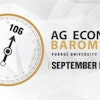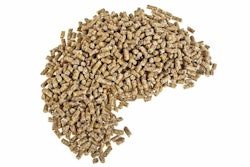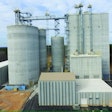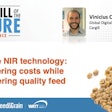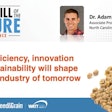
Preview the innovations and new developments set to influence how sensors are used in feed milling, feed delivery
Sensors provide real-time feedback, collecting and displaying data to provide an instantaneous operational benefit in feed manufacturing.
In applications ranging from feed bin level indicators to hazard monitoring, sensors provide performance information to enhance preventative feed mill maintenance programs, ensuring facilities run efficiently, with fewer repairs and prolonging the life of the equipment.
Automated control systemsand facility upgrades further promote the integration of sensors into feed production for safety and to ensure proper equipment operation, leading to mills of all sizes embracing the new sensor products.
Beyond the many current benefits of sensors in feed production, several new developments in the technology and how it is applied have come on the market.
Here is a list of five ways feed mill sensor technology may further evolve in the future:
1) IIoT and connectivity
A general emphasis on the industrial internet of things (IIoT) in feed production is driving platforms to deliver on the latest industrial technologies, such asEthernet/IP(industrial protocol) or cloud connectivity.
4B Components, for example, has developed products that allow its sensors to be connected over Ethernet/IP to the PLC “as opposed to every sensor being wired back directly or having a separate standalone controller that would then be integrated into the PLC,” explains Anthony Leali, the business development manager for electronic products at4B Components Ltd.
Leali believes manufacturers will expand sensor functionality beyond measuring physical phenomenon to the raw data back to the PLC, e.g. smart sensors that further integrate with automation technology.
2) Feed mill automation providers enter the space
Feed mill automation control suppliers have always bought sensors from another original equipment manufacturer (OEM); however, some are expanding into manufacturing their own sensors.
“The software automation guys are not just doing the software anymore, they’re starting to pull in some of those other functions and expand their footprint,” Leali explains. “And that varies from doing some of the sensors and monitoring, but I know there are some that are actually getting into fabricating equipment as well. That’s kind of an interesting dynamic that I think is going to keep changing in the future.”
3) Feed ordering automation
Sensor technology isn’t limited to the mill. Feed supply chain automation providerBinSentryhas developed a sensor solution to determine the feed levels in on-farm feed bins and use the data to place feed orders from its reordering platform.
“Having accurate on-farm inventory information has the potential to positively affect every stage of the supply chain,” says Randall Schwartzentruber, CEO and co-founder,BinSentry. BinSentry “can ensure the right feed arrives to the right bins at the right time — eliminating late orders, overfills, feed transfers, etc.”
“This visibility into what’s happening on-farm has huge downstream benefits, from resource planning to production scheduling to more efficient transportation for deliveries,” he says. “The potential for cost savings is massive if we can collectively work to automate this aspect of the feed supply chain.”
4) 3D level scanners, sensors
Certain ingredients don’t flow very well in all vessels. Here,3D level scanner deviceswith multi-point volume readings ensure the accuracy of the measurements.
“Materials bridge, rat hole or one single point could be affected and affect the accuracy so having multiple points is important,” says Nathan Grube,BinMasterregional vice president of sales for the central U.S.
For example, BinSentry’s Sensus 3D Sensor bin monitoring hardware “delivers real-time bin inventory data and insights to eliminating the guesswork producers and their feed mill.” Its 3D sensors leverage machine-vision technology to read 9,000-plus points inside of the feed bin, including the detection of rat holes and empty spaces, for accurate data collection, Schwartzentruber reports.
5) Built-in sensor testing
Historically, controllers will have a built-in testing to conduct simulations to verify the sensors are working properly; however, some now offer 100% functional built-in testing.
“This means you’re actually testing the sensor sensing element and the whole function of the sensor,” Leali says. “We have some handheld sensor products that will actually exercise and test the sensor’s functionality to verify that everything is working.”
For additional insights into the latest sensor technology, read Feed Strategy’s January/February article, “How sensor technology adds efficiency to feed production”:https://bit.ly/3GxcBDQ.
Announcing the Feed Mill of the Future digital supplement
WATT’s feed brand’s Feed Strategy and Feed & Grain magazines join forces to launch the monthly Feed Mill of the Future digital supplement. Each edition aims to provide animal feed industry stakeholders with forward-looking content, market insights and a spotlight on the leading-edge technologies shaping the global feed industry of tomorrow.
Subscribe today!https://bit.ly/3dWzow7



